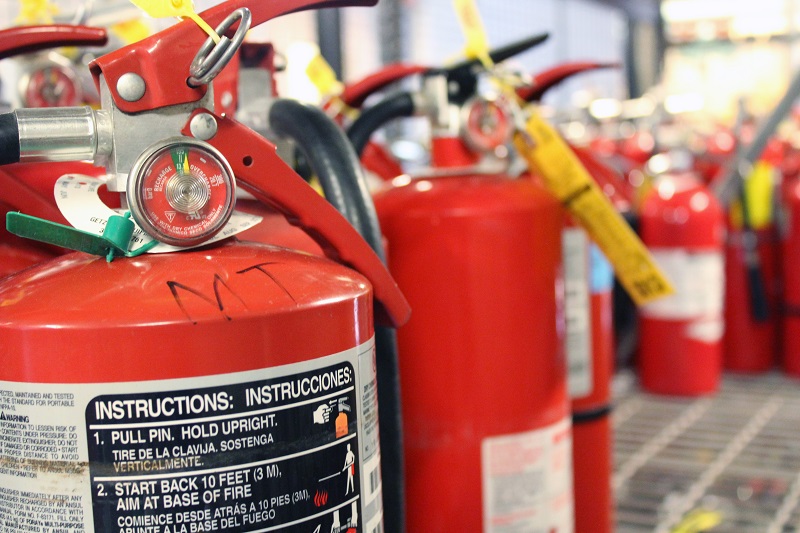Fire extinguishers play a critical role in fire safety, providing first-response capability to suppress flames before they escalate. Understanding the labeling system on fire extinguishers is essential for everyone, from business owners to homeowners. Fire extinguishers come with a combination of letters and numbers that categorize their type and effectiveness in combating different classes of fires. This article will delve into what the number on a fire extinguisher label indicates, alongside important details about fire extinguisher classifications.
What does the number on a fire extinguisher indicate?
The number on a fire extinguisher corresponds to its effectiveness rating. It typically represents the size or capacity of the extinguisher, measured in gallons or pounds. This number helps users determine how long the extinguisher will last under typical usage conditions and its suitability for dealing with specific fire types.
Fire Extinguisher Classes
Fire extinguishers are classified into several categories based on the type of fire they are designed to extinguish. The classification system is crucial for ensuring that the correct type of extinguisher is used in emergency situations. Here’s a breakdown of the fire classes:
| Fire Class | Description | Common Materials Involved |
|---|---|---|
| A | Ordinary combustibles | Wood, paper, cloth, trash, and some plastics |
| B | Flammable liquids and gases | Gasoline, oil, grease, acetone, and paint |
| C | Electrical equipment | Appliances, wiring, and circuit breakers |
| D | Flammable metals | Magnesium, titanium, and sodium |
| K | Cooking oils and fats | Vegetable oils and animal fats |
Understanding Fire Extinguisher Ratings
The ratings on fire extinguishers provide key insights into their performance. For Class A extinguishers, the rating denotes the amount of fire that can be effectively extinguished. For example, a rating of 2A means that the extinguisher can suppress a fire equivalent to 2.5 gallons of water. Class B extinguishers have a similar rating system, where the number indicates the area, in square feet, that can be covered for flammable liquid fires.
| Class | Extinguisher Ratings | Water Equivalent (for Class A) | Coverage Area (for Class B) |
|---|---|---|---|
| A | 1A to 40A | 1 to 40 gallons | N/A |
| B | 1B to 40B | N/A | 1 to 40 square feet |
| C | No numeric rating | N/A | N/A |
| D | 1D to 4D | N/A | N/A |
| K | No numeric rating | N/A | N/A |
Fire Extinguisher Size
The size of the fire extinguisher also impacts its numerical rating. Extinguishers are available in various sizes, ranging from small handheld units to large wheeled models. The weight of the extinguisher typically corresponds to its effectiveness and ease of use. A heavier extinguisher can deliver more fire-fighting agent but may be cumbersome for untrained users.
- Small Extinguishers (e.g., 2.5 lbs, 5 lbs): Ideal for home use, particularly in kitchens or garages.
- Medium Extinguishers (e.g., 10 lbs, 20 lbs): Commonly used in offices and commercial settings.
- Large Extinguishers (e.g., 30 lbs, 50 lbs): Suitable for warehouses and industrial environments, offering substantial fire suppression capability.
Selecting the Right Fire Extinguisher
Choosing the correct fire extinguisher is essential for effective fire safety. Here are some considerations:
- Risk Assessment: Evaluate the potential fire hazards in your environment. For example, kitchens require Class K extinguishers, while workshops may need Class B or D extinguishers.
- Location: Place extinguishers in easily accessible locations. The National Fire Protection Association (NFPA) suggests that extinguishers be mounted no higher than 5 feet off the ground.
- Training: Ensure that all personnel are trained in using fire extinguishers. Familiarity with local fire safety protocols and extinguisher use can save lives and property during an emergency.
Maintenance and Inspection
Regular inspection and maintenance of fire extinguishers are crucial for ensuring their readiness in emergency situations. Fire extinguishers should be inspected annually by a professional and maintained according to the manufacturer’s guidelines. Key maintenance tasks include:
- Visual Inspection: Check the pressure gauge, physical condition, and accessibility of the extinguisher.
- Internal Maintenance: Every 5 to 6 years, extinguishers should undergo internal examinations to ensure functionality.
- Replacement: Expired extinguishers or those with damaged parts should be replaced immediately.
Final Thoughts
Understanding the labeling system on fire extinguishers, including the significance of the letters and numbers, can drastically improve fire safety preparedness. Being aware of the different classes of fire extinguishers and their respective ratings empowers individuals and businesses to choose the appropriate equipment for their specific fire risk scenarios.
Fire safety education does not stop at having extinguishers; regular training and maintenance are also vital components of an effective fire safety strategy. Whether you are a homeowner, business owner, or safety officer, equipping yourself with knowledge about fire extinguishers is essential for ensuring safety and response readiness in the event of a fire.
By staying informed about fire extinguisher types, ratings, and operational strategies, individuals can create a safer environment for themselves and others.




